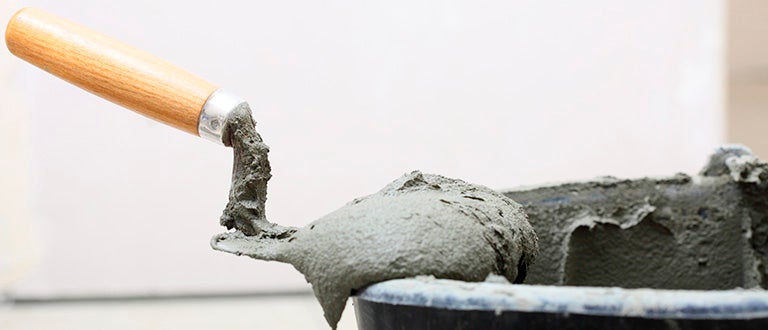Del Gado Paper Published in Nature Communications

Professor Emanuela Del Gado’s work on the physics of cement hydrates could lead to more sustainable concrete production techniques. (iStock photo)
August 2, 2016 — A paper coauthored by Georgetown College physics professor Emanuela Del Gado was published in the journal Nature Communications last month.
Del Gado and her coauthors from the Massachusetts Institute of Technology, Cambridge University, Berlin’s Helmholtz Zentrum and the Chinese Academy of Sciences studied cement hydrates, the main binding agents in concrete. They aimed to find a better understanding of how the substance functions — the physics behind the solidification process cement undergoes after mixing it with water.
The study found how manipulating environmental factors during the formation of cement hydrates may in fact affect the properties of the finished, dried material, and it could be used to better design its properties.
A better understanding of the physics of cement could have major environmental implications, as concrete production is responsible for up to 10 percent of manmade carbon dioxide emissions. Del Gado and her colleagues are exploring ways to either alter the makeup of the cement or produce it more efficiently. If successful, this research could lead to a dramatic reduction in concrete-related emissions.
“The problem is that cement is produced in a way that’s very harmful for the environment, and it’s a huge industry with a large volume of production,” Del Gado said. “But it’s not well understood how you could modify it in a way that keeps its important properties while reducing its environmental impact.”
A theoretical physicist by trade, Del Gado first became interested in the physics of cement while working in Switzerland, where she met researchers from MIT’s Concrete Sustainability Hub. She saw parallels to her own work on gels and other amorphous materials in Georgetown’s Institute for Soft Matter Synthesis and Metrology, and soon recognized that the cement formation process was important but poorly understood.
Del Gado hopes that her background in the fundamentals of amorphous material physics will help her make meaningful advances in the understanding of cement hydration and hardening.
“It’s the first step to materials design, which is crucial and used in things like biotech and food,” Del Gado said. “It’s never been used for cement, an engineering field where a lot can be gained with more science.”
— Patrick Curran
For more on Professor Del Gado’s work on cement hydrate physics, read this piece from February.